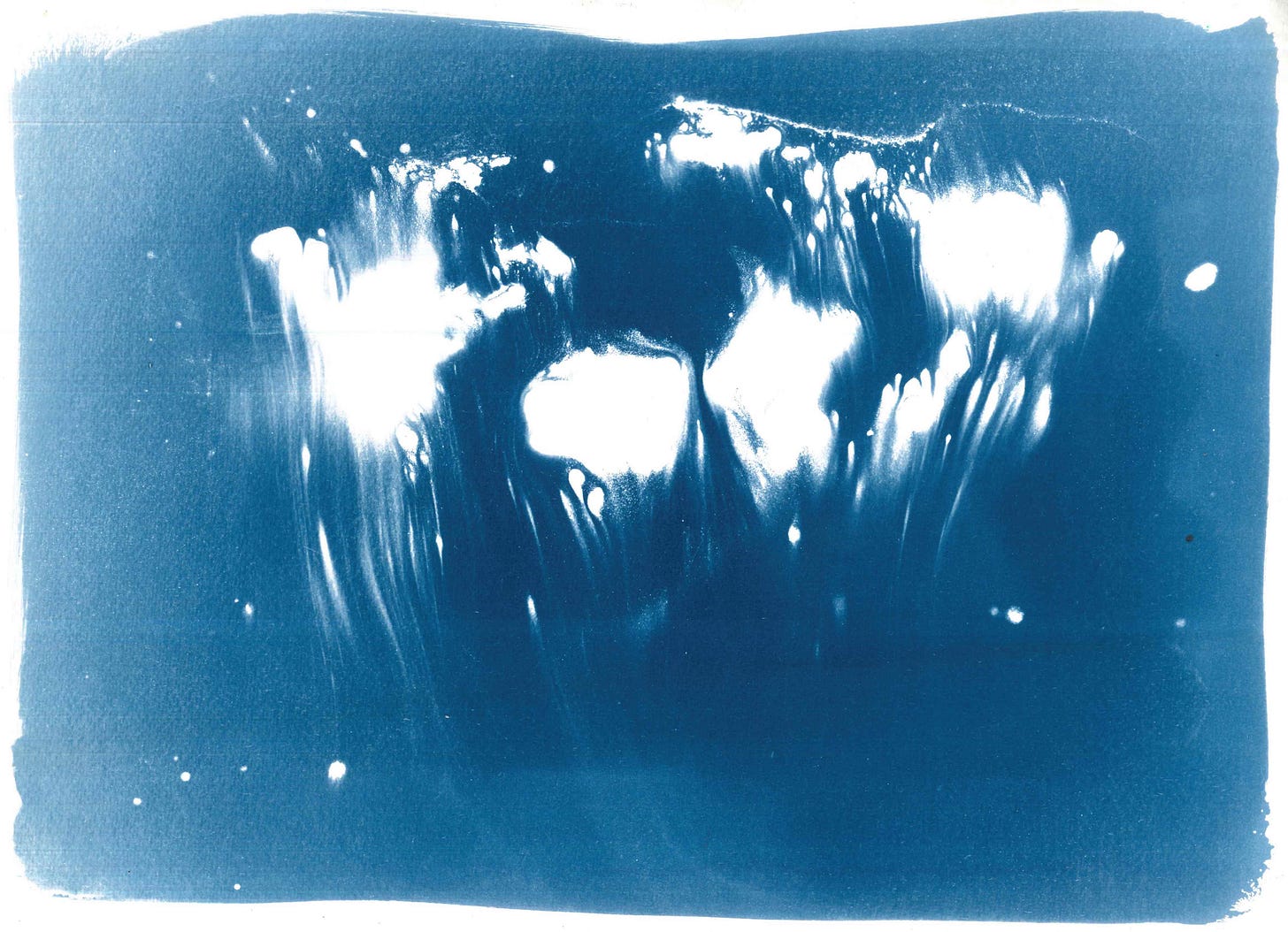Exploring Cyanotypes: A Beginner’s Guide to This Unique Cameraless Photography Technique
Basics & Ideas
Hey, you might have been wondering what really are Cyanotypes or why this old photography process is making a resurgence. If you're an artist, photographer, or creative soul looking for a new medium, cyanotypes could be the perfect process for you to explore. This simple yet fascinating photographic technique dates back to the 19th century and produces stunning, deep blue prints. Whether you're interested in experimenting with alternative photography or looking for ways to add depth and texture to your own creative practice, cyanotypes offer endless creative possibilities and is very accessible.
What Are Cyanotypes? Some Facts:
Cyanotypes are often referred to as ‘blueprints’ because they were heavily used to make reproductions of architectural drawings.
The process is an alternative photographic process invented in 1842 by Sir John Herschel, a British astronomer and chemist. It is known for producing images in a distinctive cyan-blue colour.
The process involves using photosensitive chemicals to create photographic prints without the need for a traditional darkroom.
While the process has historical roots in the world of technical drawings and scientific illustrations, cyanotypes have evolved into a beloved creative process for contemporary artists and photographers like myself!
Why Cyanotypes Are Still Popular:
Despite being more than 150 years old, cyanotypes remain relevant in the art world and used by many artists for several reasons:
Simple, Accessible Process: Cyanotype is one of the most accessible photographic techniques. Unlike traditional darkroom processes that require complex equipment, cyanotypes can be created at home with minimal supplies and materials. It’s a great option for beginners looking to explore alternative photographic methods.
Rich, Unique Colour: The deep, vibrant blue colour of cyanotypes is unmistakable. This unique hue provides a striking contrast to the often monochrome, black-and-white images created by other photographic methods. It lends a vintage, ethereal quality to your prints, making them stand out in any art collection or portfolio.
Creative Freedom: Cyanotype offers plenty of room for experimentation. Artists can use different surfaces, objects, and exposure times to create a wide range of effects. Whether you prefer abstract compositions, botanical prints, or detailed portraits, cyanotypes allow for diverse expression.
Eco-Friendly: The cyanotype process is an environmentally friendly alternative to traditional photography. It doesn’t require toxic chemicals or darkroom setups, making it an appealing choice for eco-conscious creatives. Additionally, the ingredients used are relatively harmless, so it’s a safe process to try at home.
Creative Ideas to get you started using Cyanotypes:
Cyanotypes are a fantastic way to experiment with photography, but they also open the door for many other creative possibilities. Here are five indepth ideas to get you started:
Keep reading with a 7-day free trial
Subscribe to Art Notes to keep reading this post and get 7 days of free access to the full post archives.



